RAF Spitfire remnants unearthed in County Monaghan
- Published
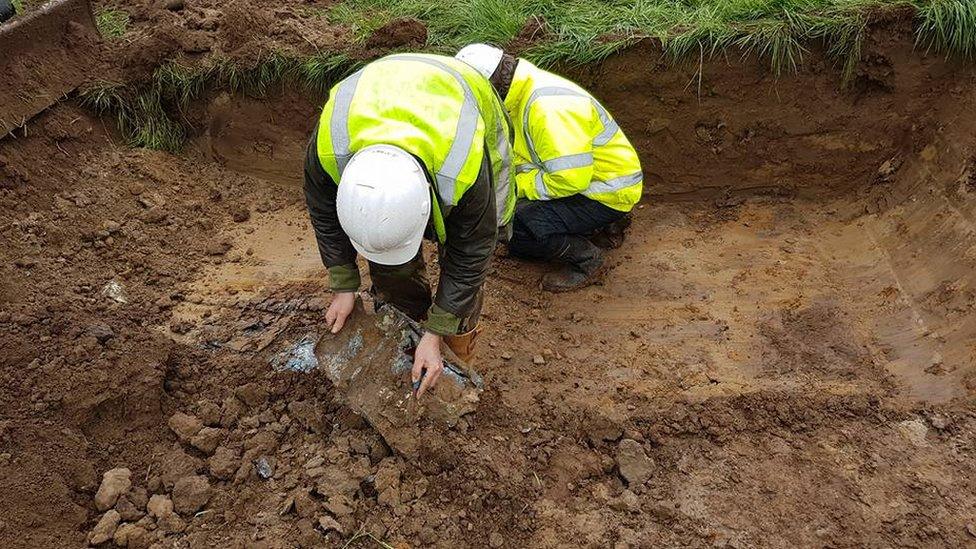
Finding the cockpit door was an unexpected but welcome surprise
Remnants from an RAF Spitfire plane that crashed into a field in County Monaghan in 1942 have been recovered.
It was believed the Irish Army had removed all the wreckage at the time but a group of aviation historians and Queens University Belfast archaeologists thought otherwise.
After ground surveys pointed to parts being present just four metres below the surface, a number of items were excavated on Saturday.
These included the cockpit door.
The pilot - Gordon Hayter Proctor - had safely bailed out of the plane on the northern side of the border after his instruments froze. It glided on before crashing in a field in Figullar, Emyvale, on 20 November 1942.
The plane, which had seen action in the Battle of Britain, was considered "war-weary" and had been assigned to a weather-monitoring squadron operating out of RAF Aldergrove in Antrim in 1942.
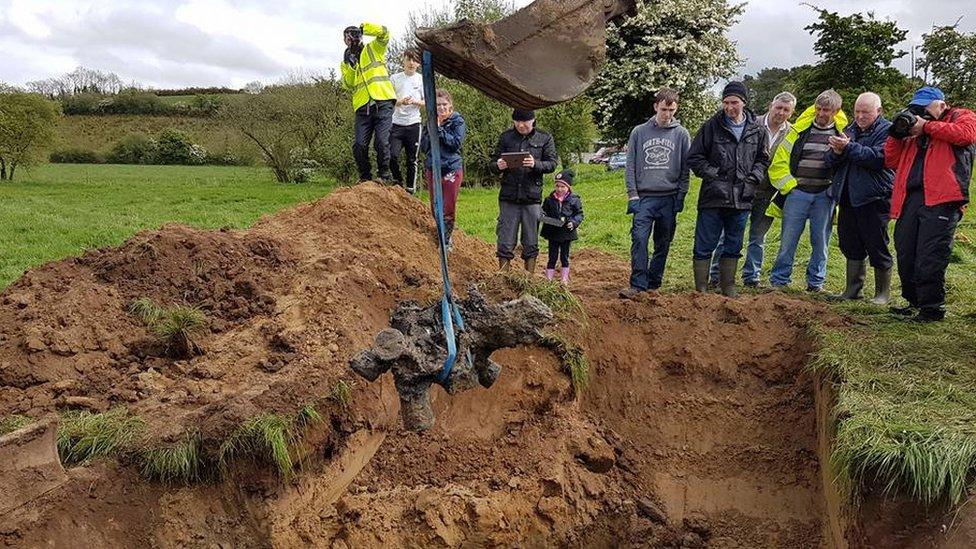
Some major engine parts were uncovered
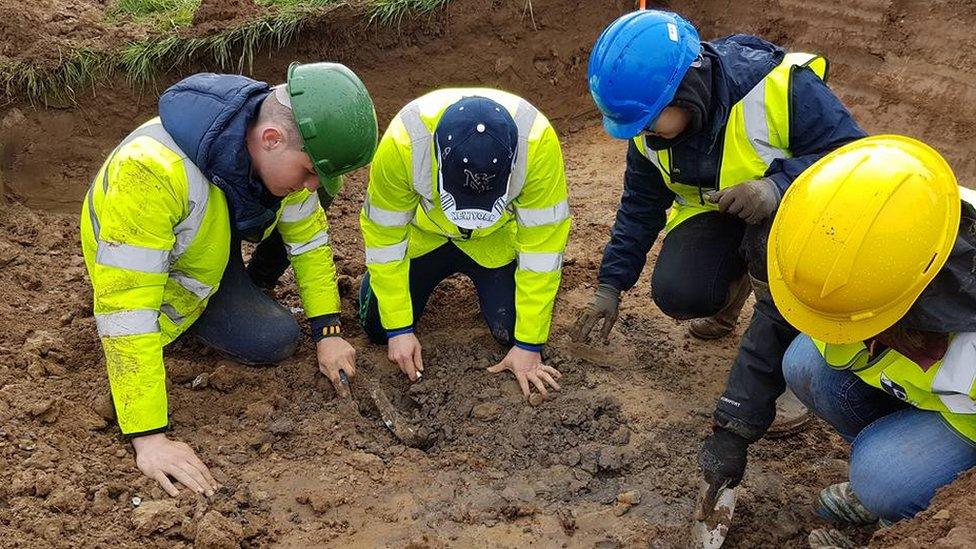
Pupils from three schools were invited to get their hands dirty
Project organiser Jonny McNee told the BBC the dig had "exceeded expectations" and they had recovered "Monaghan's Battle of Britain forgotten heritage".
The aviation historian said they had unearthed internal parts of the Rolls-Royce engine and plates inscribed with information, such as manufacturing details.
"The cockpit door was a bit of a surprise," he said. "The last person to use it was Flt Lt Gordon Hayter Proctor who was later declared missing while serving in Burma.
"He has no grave and now he will be remembered in a bit of Monaghan. The display will be homage to him."
He added that the team would love to make contact with any of his family members.
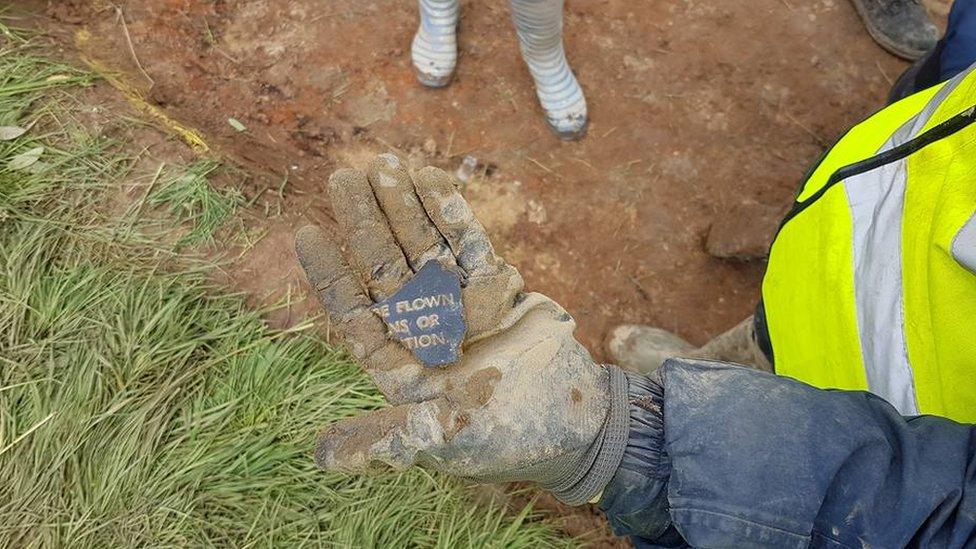
The artefacts will now have to be cleaned and catalogued before going on display at the Monaghan County Museum
Mr McNee said they knew more than 90% of the plane had been taken away at the time and probably scrapped.
"We had done our research and by looking at the Irish Army military archives, we knew that a substantial amount of the plane was taken away," he said.
"Back in September we applied for and were granted a licence to use ground-penetrating radar which detected the impact crater and showed sizable metallic remains."
'Gooseberry bush'
Pupils from three schools - two in Monaghan and one in County Londonderry - had been invited to help out at the dig, which also attracted the attention of many locals.
Josie McCusker, who remembers seeing the Spitfire fall from the sky all those years ago, stayed for the entire duration of the dig.
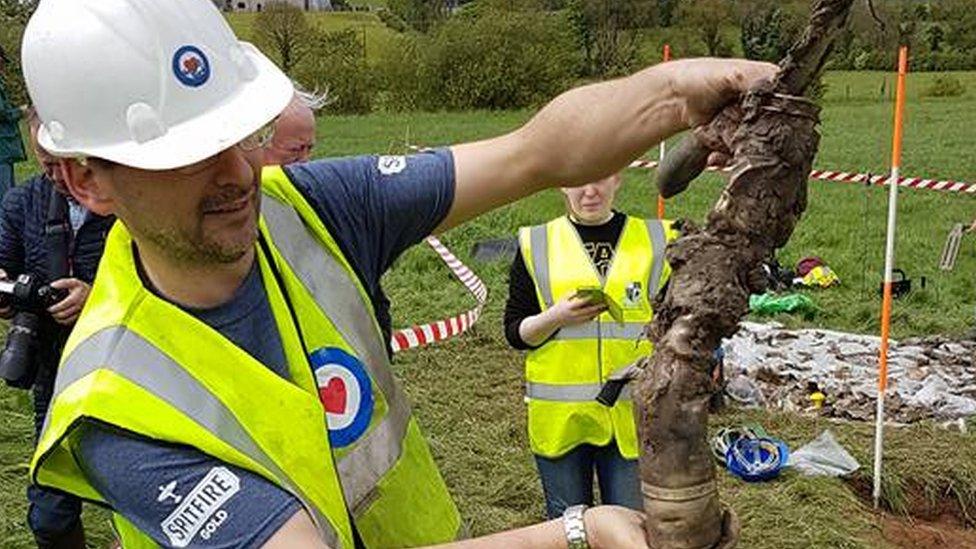
Mr McNee, pictured, described some of the parts as "sad looking"
"It was the morning, a Sunday morning and I remember the loud noise of it," she told BBC Radio Ulster.
"My father was milking cows in the byre and he heard the noise and he ran into the house thinking it was on fire.
"We then discovered it was a plane - it took the tops off the trees and a piece of it fell down in a gooseberry bush behind the house.
"I remember much of the plane being removed by the Army, and remember seeing it on a lorry."
The job now is to clean, sort, identify and catalogue the items before handing them to the County Monaghan Museum, which will then be able to claim it has artefacts from the only Battle of Britain Spitfire to be legally excavated in Ireland.
- Published6 August 2011